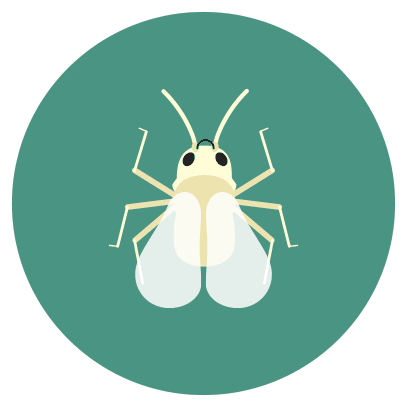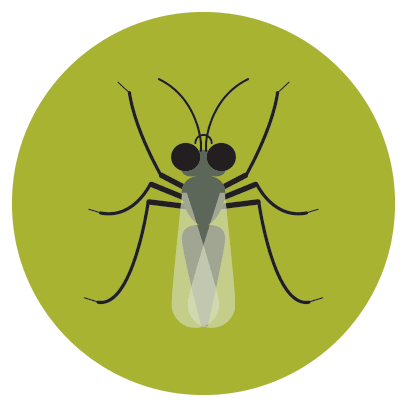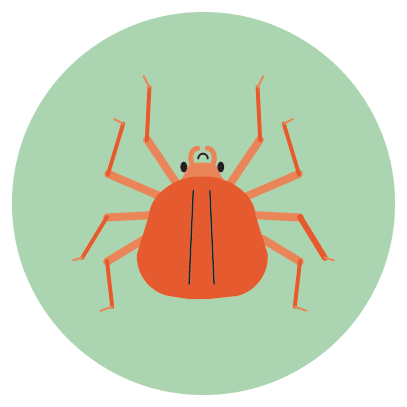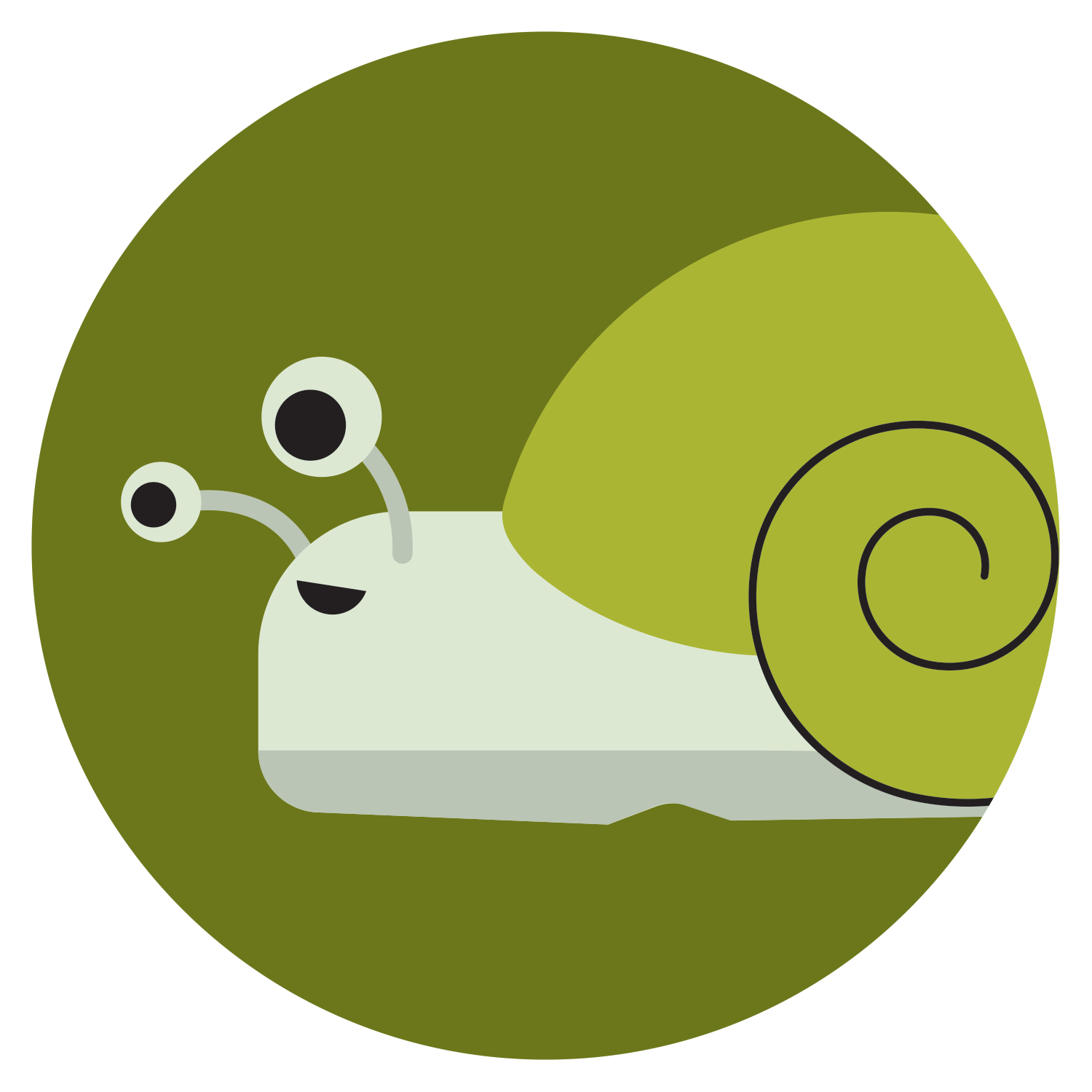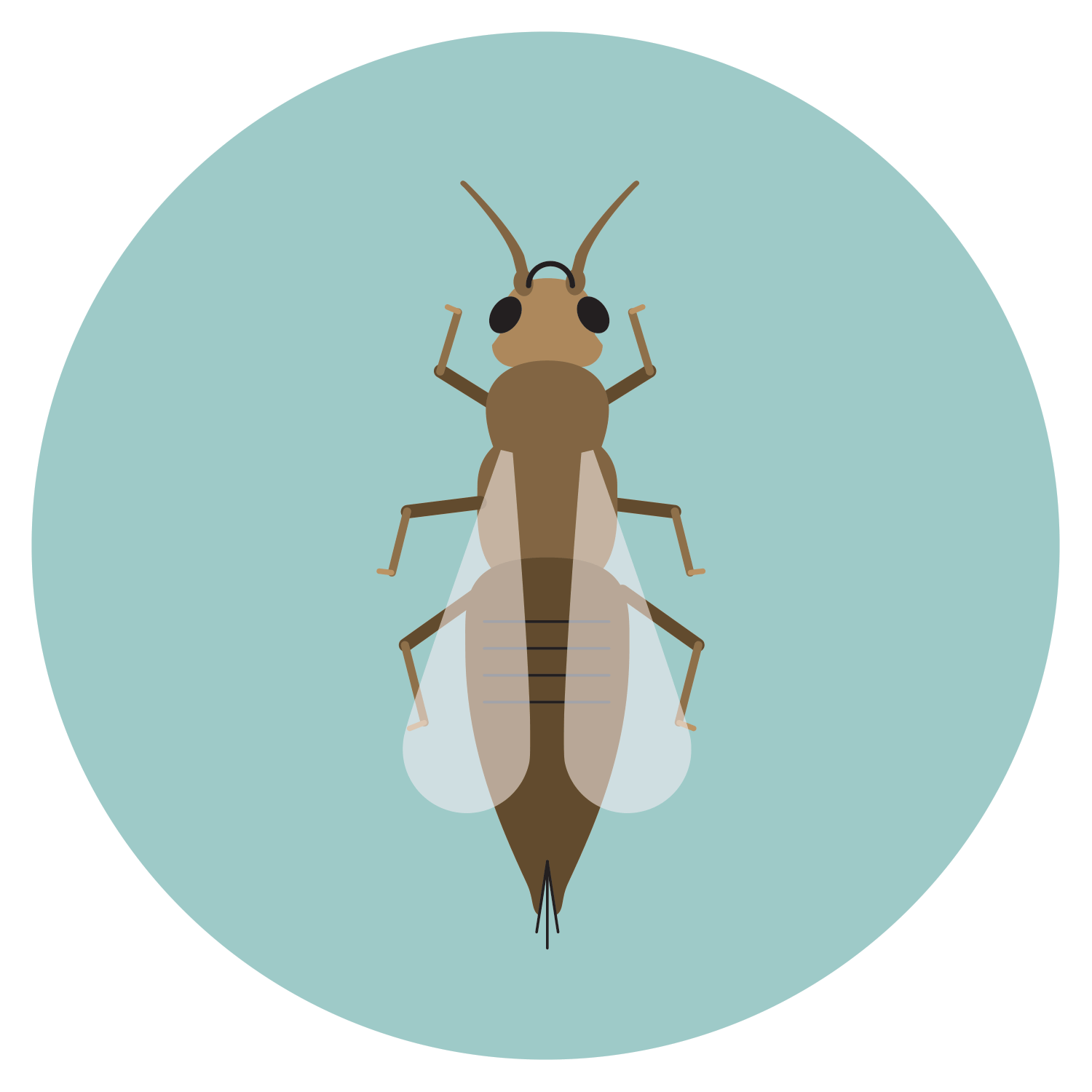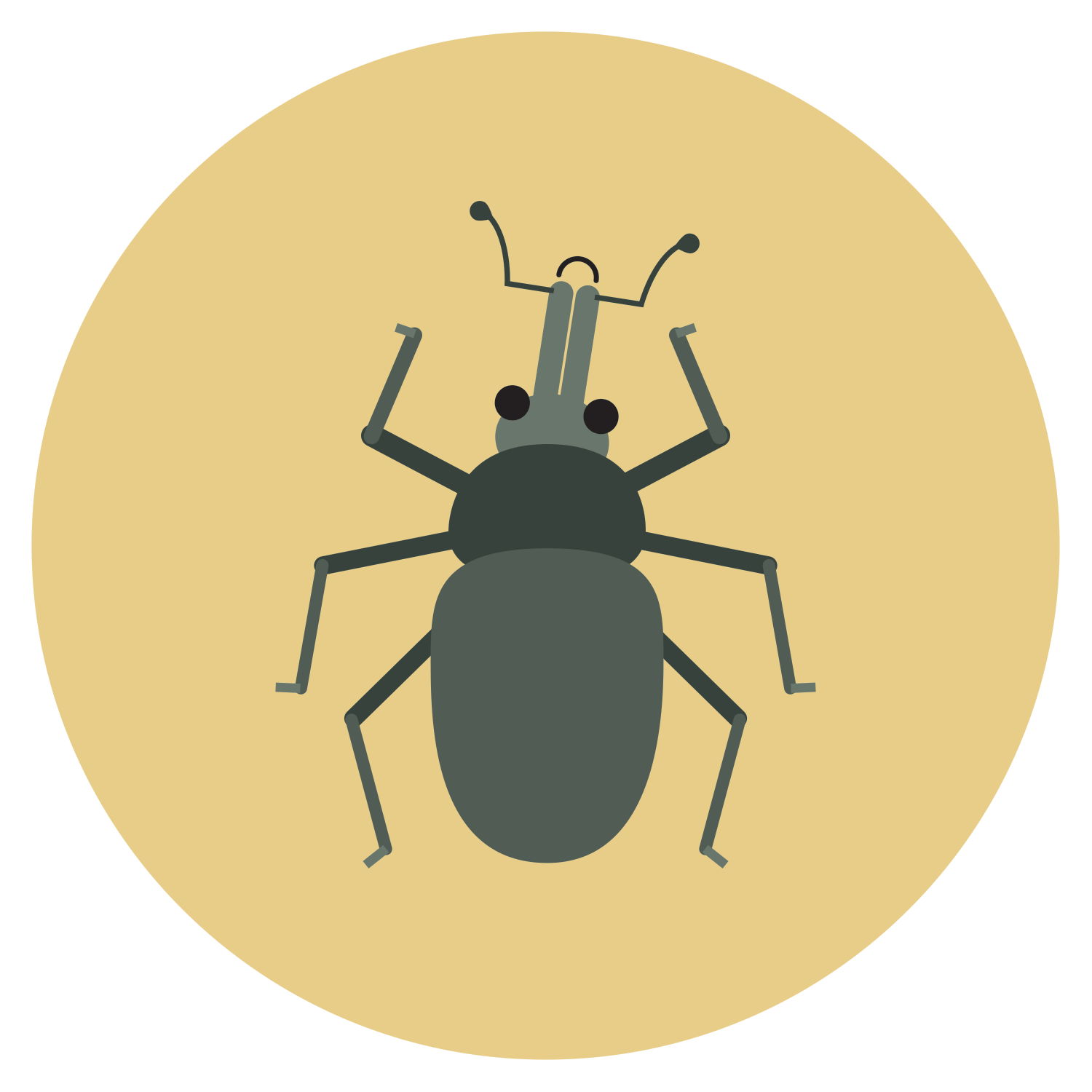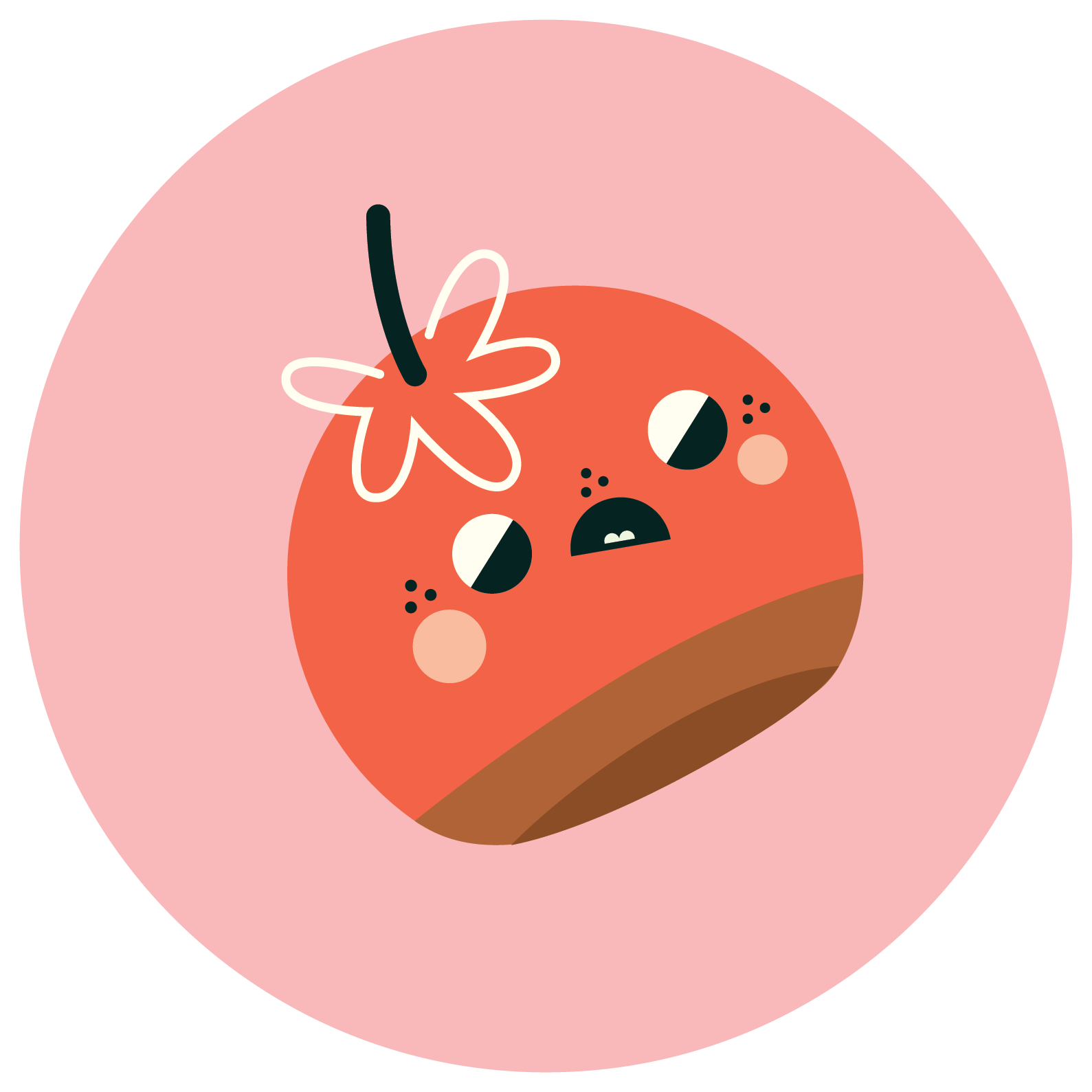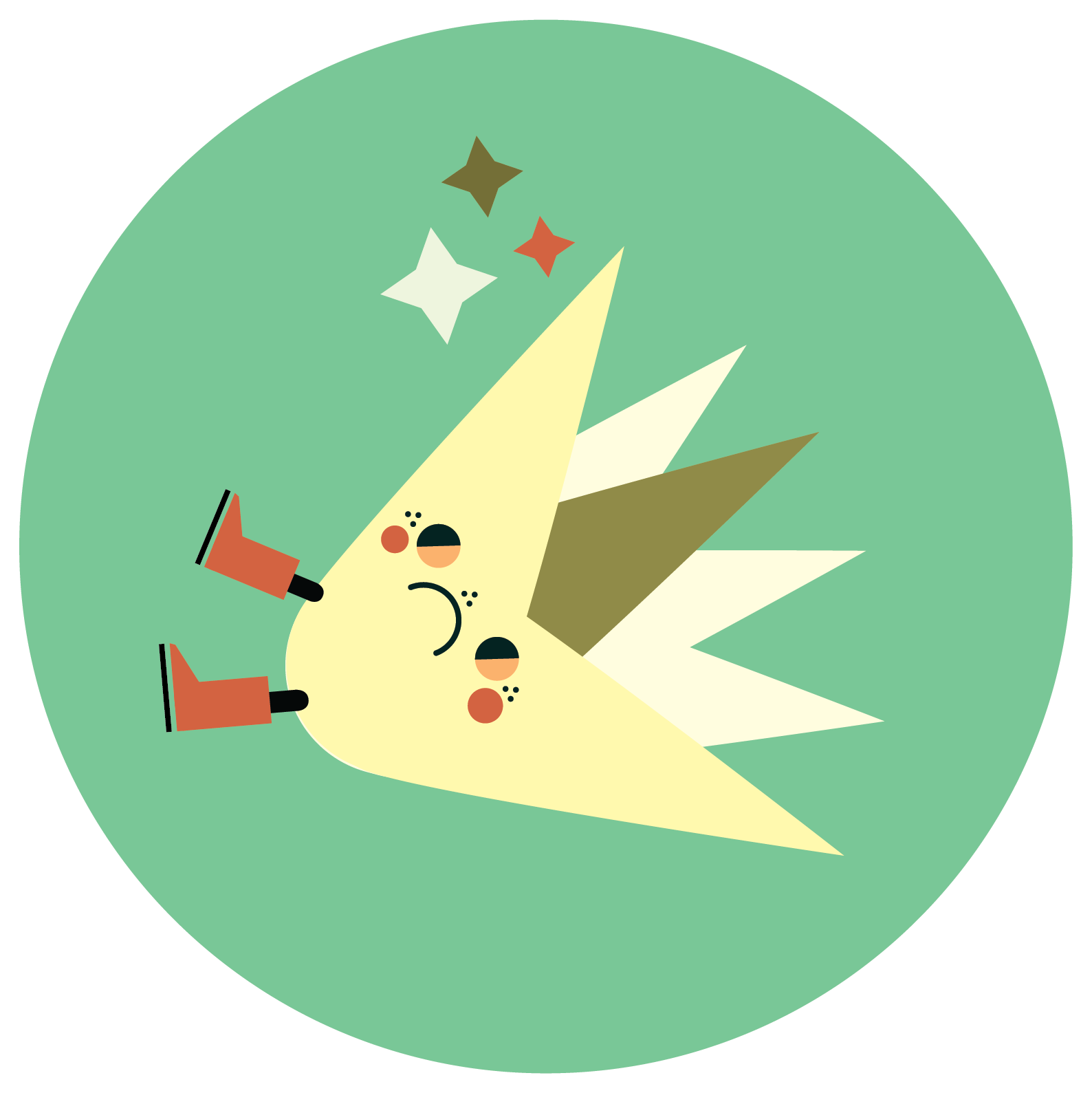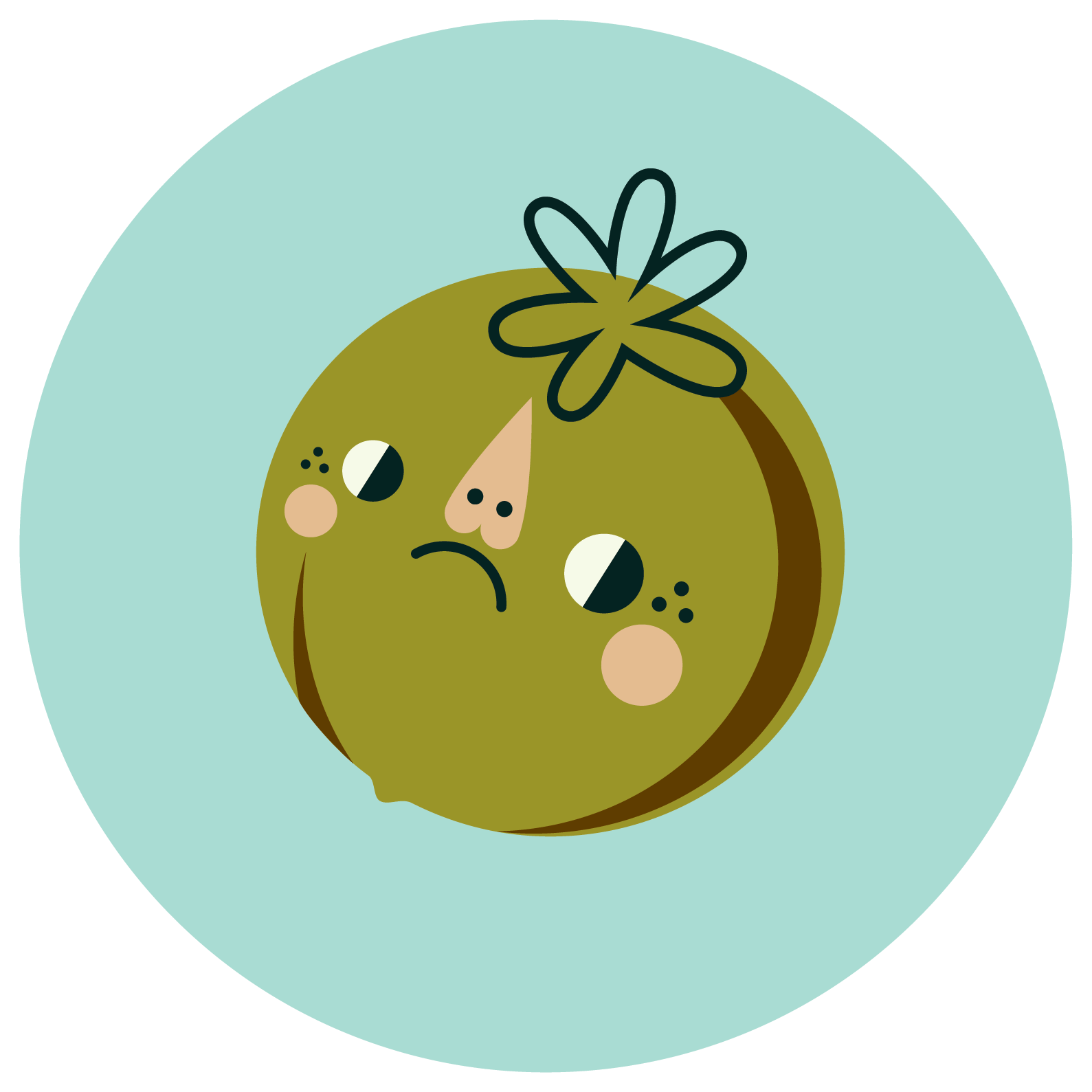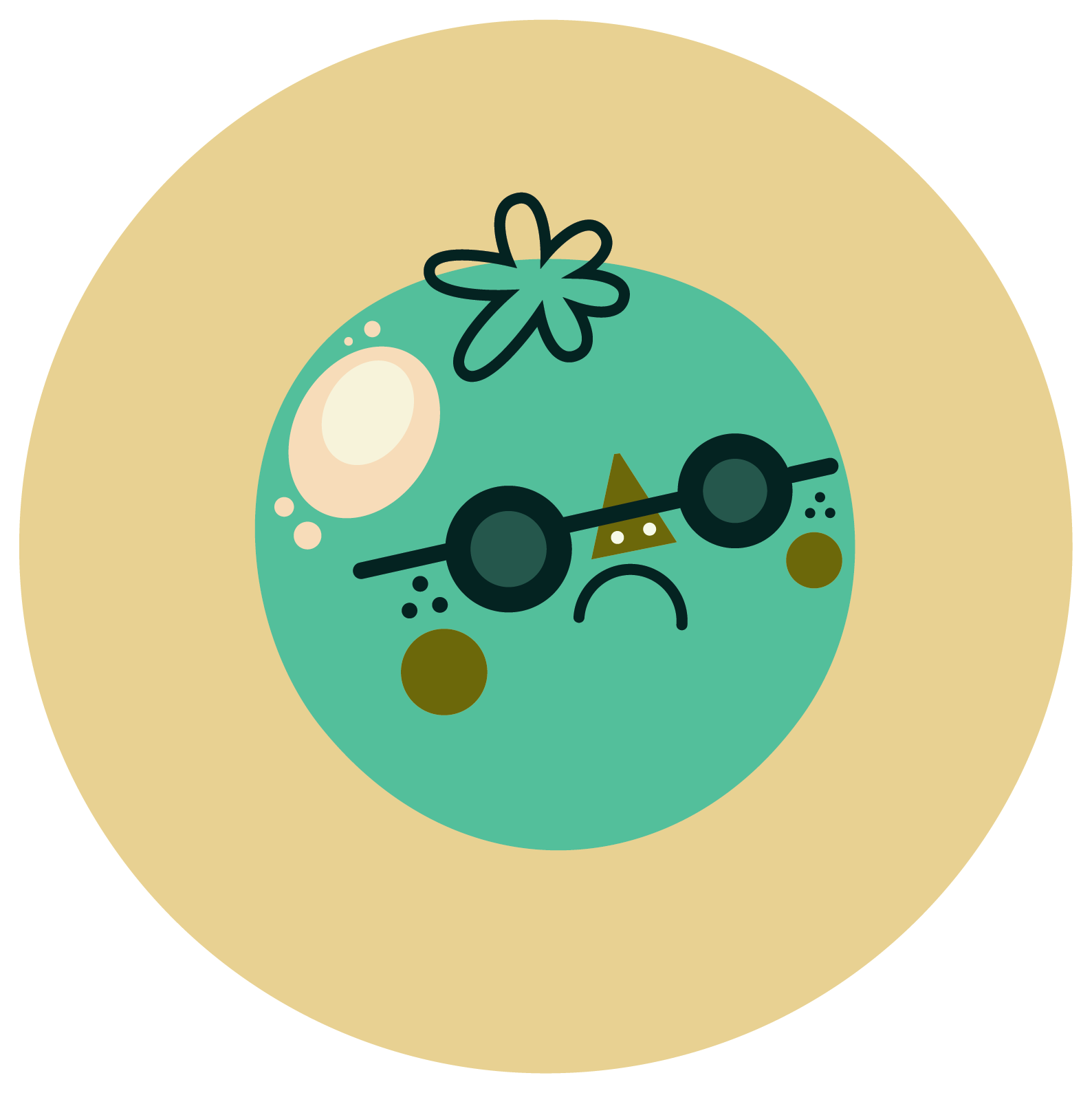Tiny GARDEN Kit
TROUBLESHOOTING
INSECTS, INSECTS EVERYWHERE, ON MY PLANTS and in my… hair?
Insects are a truly beneficial part of nature, and live off of many of the same plants and animals that we do. Without insects, we’d be in big trouble. They are a necessary part of our ecosystem. Insects are not the enemy. It’s just that sometimes we want to eat the same things.
At times though, it might be necessary to intervene if an insect is overwhelming and harming your plant — especially if you find them indoors. It’s unlikely that your indoor veggie plant will attract or harbor harmful insects since it is harder for insects to seek it out, but it can happen if the plant is sitting in front of an open window, or insects have been tracked in from outside. They can also hitch a ride on other plants, in soil, or even on other foods you’ve brought in from the grocery store.
In some cases outside, beneficial insects and animals will take care of things before you need to, but indoor plants generally don’t attract the good bugs that fight the bad ones, so it might be necessary to intervene.
There are a few common insects that can damage your plants. Click to learn more about how to identify them, and how to help eliminate the problem:
Garden pests can be specific to certain regions, and certain types of plants. If you spot something unusual munching on your veggies that is not listed above, an additional comprehensive list is available here.
PLANTS CAN GET DISEASES?!?
Garden plants can get sick in a variety of ways, ranging from bacteria, to viruses, to fungal infections. Different regions of the US have different common plant diseases. Indicators of disease include: spots, leaves turning brown or looking moldy, a powdery substance on the leaves and fruit, and leaves curling.
One of the best ways to deal with garden diseases is prevention. Plants are more likely to get diseases if they are not well cared for, improperly watered, or are planted in poor soil.
-
Keep the leaves dry
Many diseases are transferred from the soil to the leaves and stems by splashing water. To prevent this, water the soil directly and lightly to prevent any splashing back up onto the leaves—do not water the leaves! You can also mulch around the base of the plant with straw, hay, or wood chips to prevent the soil from splashing up onto your plant.
Also, don’t handle your plants when they are wet, as that can transfer disease from plant to plant. Be sure to do your pruning and picking when the leaves of your plant are dry.Remove diseased leaves
If you note the beginning signs of disease on your plant, remove any affected leaves to keep it from spreading. Throw any diseased plant material in the garbage, NOT in the compost bin. Also, be sure to wash your hands after, to prevent the spread of the disease to other parts of the plant.Disinfect pots
To prevent disease from appearing in your plants next year, clean pots with a 10% bleach solution at the end of each season, and use new soil.Rotate where your veggies are planted
If you plan to plant outside in the ground, change the location in which they are planted each year. Since many diseases come from the soil, changing where they are planted can help.Clean pruning tools
If you need to prune or trim your plant, diseases can spread on the surfaces of your pruning shears. Be sure to disinfect your shears or scissors with isopropyl alcohol often to prevent the spread of disease, particularly when cutting into a plant.
Diseases can be specific to certain regions, and certain types of plants. If you suspect a disease is affecting your veggies, a comprehensive list available here.
WHAT ELSE COULD GO WRONG? (TINY TOMATOES ONLY)
There are a number of different things that can affect your tomato plants that are not directly related to insects or disease. They often occur with temperature fluctuations, improper/irregular watering, or nutritional imbalances.
-
Blossom end rot looks like a disease, but it is actually caused by a calcium imbalance in the plant. The bottom of the tomato appears to be “rotting” by turning brown and getting squishy. This can be caused by irregular watering or a nutritional imbalance in the soil that is not allowing the plant to take up enough calcium.
While you may lose a few tomatoes, it is possible to correct. Here are a few things to try:
Maintain consistent moisture in the soil
Apply mulch around the plant to help maintain the soil moisture
Purchase amendments that add calcium to the soil.
Note: Try adjusting your watering first before adding any amendments to your soil—it can be possible to add too much and create other problems.
-
Flowers can drop off of your tomato plant before creating fruit for a few different reasons, one of which is poor pollination. Learn more about helping proper pollination here.
Severe temperature fluctuations can also cause flowers to drop off—a rise above 95º or a drop below 55º. While you may lose out on a few tomatoes, when the situation becomes more stable again they should return!
-
Tomatoes can split and crack pretty easily, and some varieties are more prone than others. Getting too much moisture too quickly after a dry spell can cause this, or if the fruit gets too ripe before picking.
While cracked and split tomatoes may look ugly, they are still edible, unless you notice mold or rot developing.
To help prevent splitting, be sure that the plant receives consistent moisture.
-
Sunscald happens when tomatoes are directly in the sun during hot and dry weather—basically a tomato sunburn. The tomato will look lighter or yellowish where exposed to the sun. Over time, the burned area will start to appear thinner and almost paper-like.
Leaves often provide shade for the tomatoes, but sunscald can become a problem if you’ve needed to remove leaves due to a disease, or pruned for other reasons.
You can still eat tomatoes that have sunscald. Just cut off any affected parts. If the tomato has developed other issues in the affected area, such as mold, discard the tomato.


